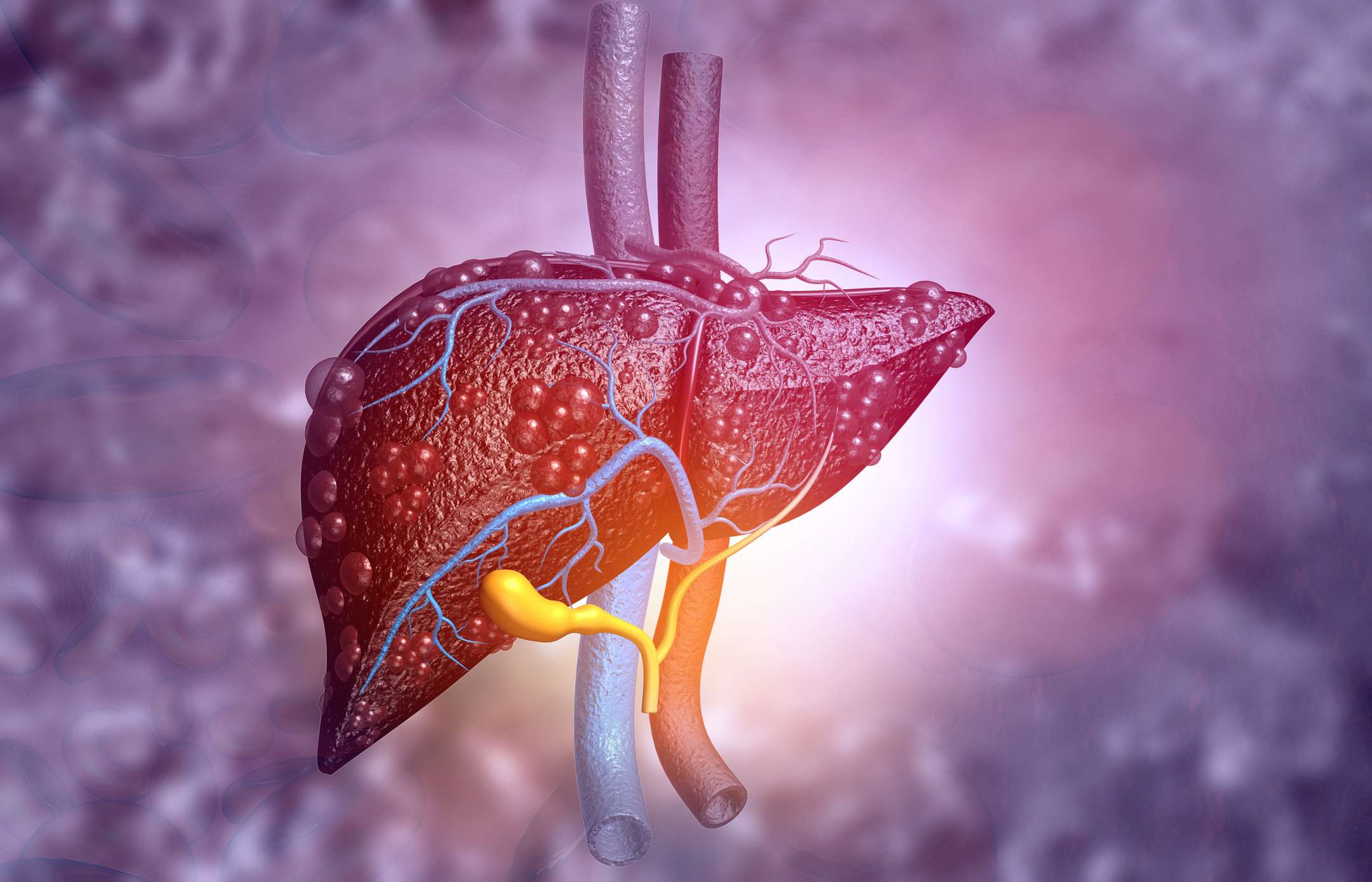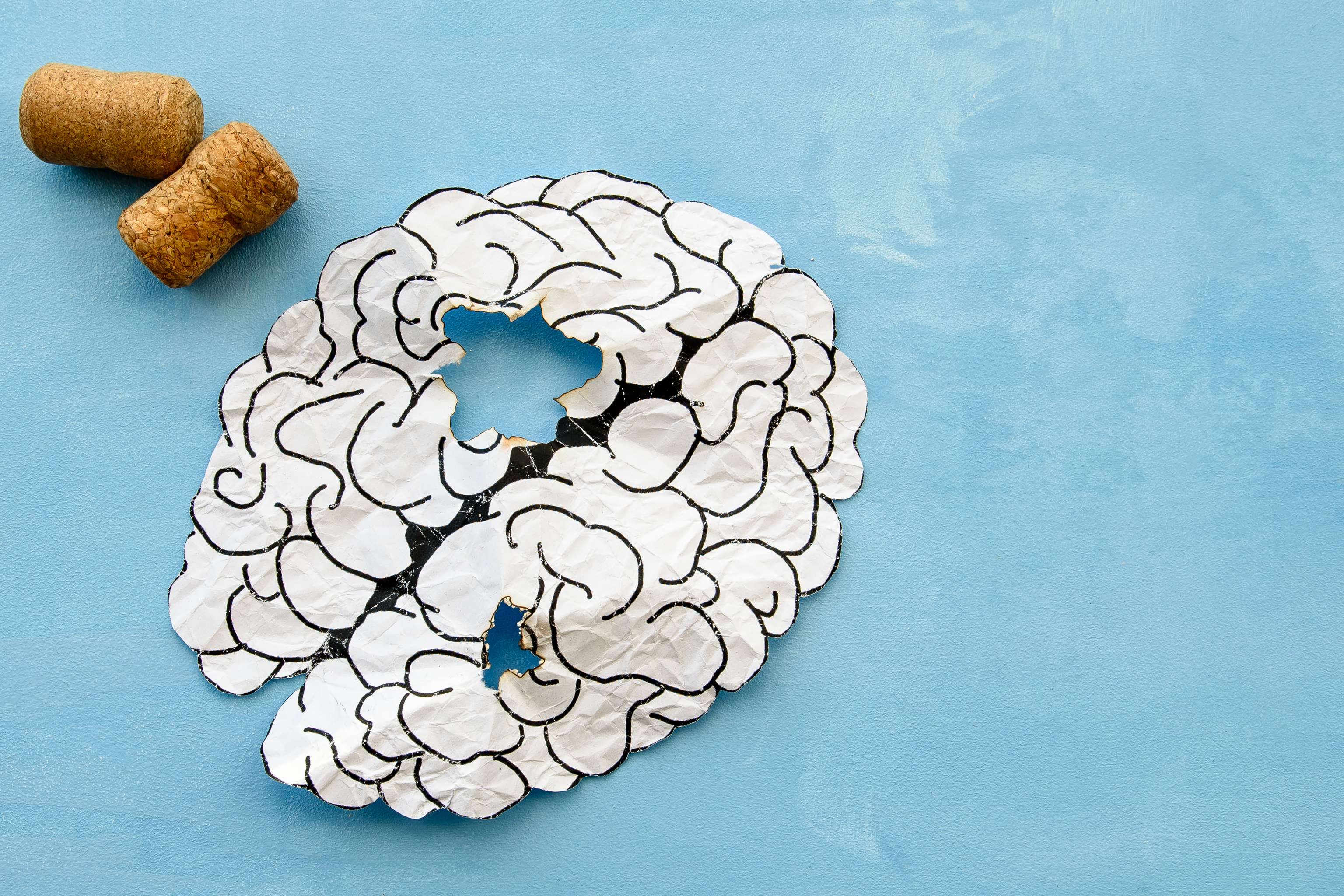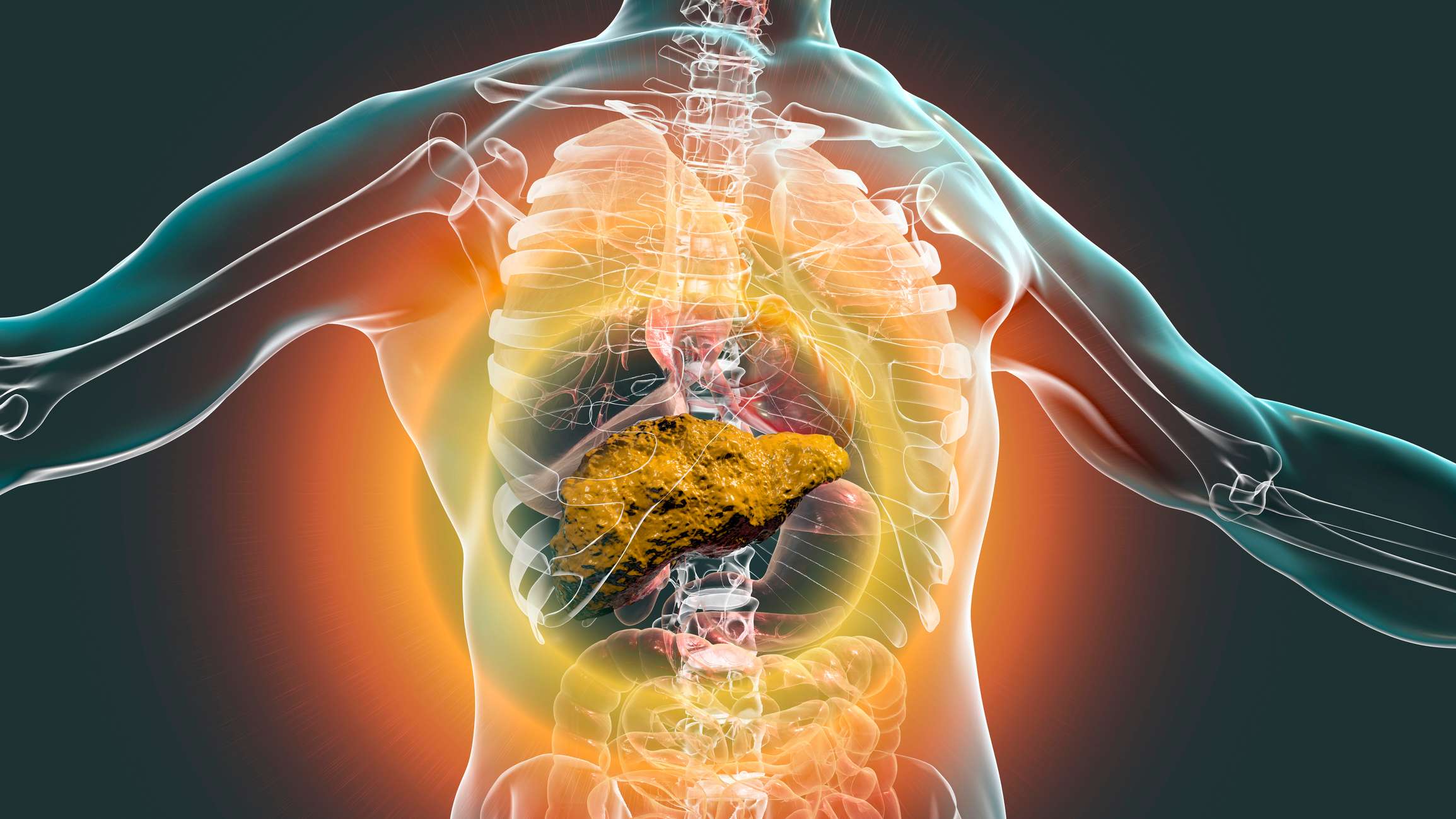Alcohol - an underestimated health risk?
How is alcohol absorbed and processed in our body?
Alcohol is absorbed throughout the digestive tract. Even the oral mucosa absorbs small amounts of ethanol. The part absorbed through the oral mucosa passes directly into the bloodstream, while the part absorbed through the stomach or intestinal mucosa first passes through the liver. The liver breaks down some of the ethanol, which reduces the amount that passes into the bloodstream. In the liver, alcohol is broken down to ethanal by alcohol dehydrogenase, an enzyme. Ethanal is then converted to harmless acetic acid by acetaldehyde dehydrogenase. The harmful part of alcohol breakdown is the intermediate product ethanal. This is also responsible for the hangover the next morning. Furthermore, its breakdown is inhibited by sugar, which is why the hangover is particularly bad with sweet alcoholic drinks (mixed drinks, liqueurs, sparkling wine).
It is important to mention here that all alcohol consumption is harmful to the liver, because the breakdown of alcohol always takes place in the same way and therefore ethanal is produced every time the liver detoxifies, which damages the liver. However, as the human liver has a sensational regenerative capacity, also known as the Prometheus effect, longer periods of abstinence from alcohol can contribute to the regeneration of the liver. Only when 80-90% of the liver tissue has been destroyed can it no longer regenerate.
In the brain, alcohol acts as a cell poison that affects neurotransmitters, i.e. messenger substances. Neurotransmitters are essential for communication between the individual cells in the brain. Reaction and perception are influenced by ethanol. It also has a rewarding, euphoric, relaxing and anxiety-relieving effect on our brain. If too much is consumed, the effect can also be narcotic.

Statistics on alcohol
In the EU, more than 7% of all premature deaths and illnesses are attributable to alcohol abuse. Even moderate alcohol consumption can increase the risk of cardiovascular disease, cancer and liver disease. The WHO lists alcohol consumption as one of the 7 leading risk factors for mortality. In Germany alone, 19,000 women and 43,000 men died from alcohol or alcohol-related secondary diseases (cardiovascular diseases, diabetes mellitus, liver diseases, etc.) in 2016.
In addition, ethanol is the cause of many traffic fatalities. 8% of all traffic accidents with personal injury in Austria in 2022 are attributable to it. 13 children were killed by alcohol on the roads in Austria in 2022, a sad high since 1992.
German health economists estimated the costs caused by alcohol in 2020 at 57.04 billion euros. 16.59 billion euros of this is directly attributable to the healthcare system. This includes medical costs, hospital stays and medication costs.
Per capita consumption of pure alcohol from the age of 15 was 10 liters in Germany in 2020. In the same year, 94.6 liters of beer were consumed per capita, 20.7 liters of wine, 3.3 liters of sparkling wine and 5.4 liters of spirits. This means that every German (aged 15 and over) would have to drink around ¼ liter of beer, 1/16 liter of wine, 1 glass of sparkling wine and ½ glass of spirits every day. If you convert these figures into pure alcohol, this would mean a daily intake of approx. 19 grams of pure alcohol. The maximum amounts of pure alcohol that are still "tolerable" in terms of health are 24 g for an adult man and 16 g for an adult woman. The different values for men and women are due to biological differences.

What are the health consequences of alcohol?
First things first: there is no safe level of alcohol consumption! Every drop of alcohol carries a health risk, no matter how much you drink. The more you drink, the higher the risk to your health. Ethanol increases the risk of cardiovascular disease, dementia, cancer and many more.
Effects on the brain and nervous system
Damage and death of nerve cells occurs in the central nervous system. This results in disturbances in the sensation of temperature, pain and touch. Ethanol also affects the cerebellum, which is responsible for movement and coordination. This also explains why intoxication often leads to staggering or difficulty walking and standing. Chronic alcoholism can also lead to concentration, speech and memory disorders. It also leads to a decrease in brain volume, which results in a reduction in intelligence. A new study from 2023 shows that risky alcohol consumption is a risk factor for dementia before the age of 65. That would mean 3000 new cases of dementia per year before the age of 65 across Europe. Risky alcohol consumption is defined as an amount of 60 g of pure alcohol in men (approx. 1.5 liters of beer per day) and 40 g of pure alcohol in women (approx. 1 liter of beer per day). A serious form of dementia caused by alcohol is Korsakov's dementia, named after the Russian discoverer and psychiatrist Sergei Korsakov. Here, malnutrition leads to a vitamin B1 deficiency (thiamine deficiency). As alcoholics often replace their meals with alcohol, this form of dementia is widespread with chronic consumption.

Effects on the cardiovascular system
In cardiovascular diseases, ethanol is involved in cardiac arrhythmia and cerebral hemorrhage. It increases blood pressure and heart rate. On the one hand, excessive consumption triggers inflammatory reactions, which then cause cardiac arr hythmia. On the other hand, it can not only increase blood pressure, but also disrupt the quality of sleep, which in turn can lead to breathing interruptions. The "holiday heart syndrome" is also well known. In this case, a few days after heavy alcohol consumption (e.g. at celebrations or parties), younger people experience noticeable heart pal pitations. Although this heart stumbling only occurs in episodes and can disappear again, it could be the first sign of atrial fibrillation, a very common cardiac arrhythmia.
Alcohol and cancer
Alcohol also plays an important role in cancer. Chronic alcohol consumption is responsible for the development of various types of cancer, particularly cancers of the digestive tract and breast cancer. In 2018, 92,000 cancer deaths in Europe were attributable to alcohol consumption.
Effects on the gastrointestinal tract
It is widely known that alcoholism has severe effects on the liver. It can lead to liver inflammation (hepatitis) and, as a result, to liver cirrhosis (destruction of liver tissue). This can lead to jaundice, enlargement of the liver, changes to the skin and nails and even liver cancer.
Much less well known, however, are the effects on the oesophagus, stomach, intestines and pancreas, where inflammation, ulcers and cancer can also occur. Inflammation of the pancreas (pancreatitis) can subsequently lead to diabetes mellitus (diabetes) and pancreatic cancer. The destruction of pancreatic tissue sometimes leads to the destruction of Langerhans islet cells, which are essential for insulin production and therefore lower blood sugar levels. If these cells are destroyed, diabetes develops as the body can no longer lower the blood sugar level. A very dreaded complication of chronic alcohol consumption is oesophageal variceal bleeding. Oesophageal varices are varicose veins in the mucous membrane of the oesophagus, which can form due to the vasodilating effect of ethanol. However, the real problem with this complication is the bleeding of these varicose veins. Due to the "unfavorable" position of the esophagus, hemostasis is only possible in a suitable facility. As a person can bleed to death within a few minutes in the event of massive bleeding, oesophageal variceal bleeding often leads to death from internal bleeding, as possible interventions cannot usually be carried out in time.

Effects on the psyche and social life
Chronic alcoholism is usually accompanied by psychological problems. It can trigger mental illnesses, but can also be caused by them. These include personality disorders, depression and anxiety disorders in particular.
In addition, there are usually problems in the social environment, as the addict's entire life revolves around the drug. Due to the disinhibiting effect of alcohol, those affected may be prone to violence and criminal acts, but the risk of accidents also increases because they lose their ability to assess themselves. Other social consequences can include financial problems, job loss or even social exclusion.

Effects during pregnancy and breastfeeding
Alcohol consumption has a particularly negative effect during pregnancy and breastfeeding, as there is not only an increased risk for the mother, but also for the unborn child or infant. Basically, every drop during pregnancy and breastfeeding is a health risk for mother and child. Heavy alcohol consumption during pregnancy can lead to fetal alcohol syndrome in the newborn, which can result in mental retardation and various organ damage.

Conclusion
Every single drop of alcohol is harmful. The greater the quantity, the greater the potential for harm. In order to keep this risk as low as possible and because ethanol is an accepted consumer good in society, which is part of social life, tolerable consumption limits have been introduced, which are 24 g of pure alcohol for adult men and 16 g of pure alcohol for adult women.
Cancer, dementia, cardiovascular disease, alcohol addiction and fetal alcohol syndrome in newborns are just a few of the health consequences of alcohol. Even the tolerable limits mentioned above are no guarantee of not dying from one of the many consequences of alcohol consumption.
However, there is good news from a research report published in 2019, which was commissioned by the Austrian Federal Ministry of Labor, Social Affairs, Health and Consumer Protection. According to the report, there has been a decline in alcohol consumption among young people over the last 20 years. Not only the frequency of drinking has decreased, but also the amount drunk. This trend can be seen much more clearly in male adolescents than in females. However, boys continue to drink more than girls.
Sources
- Chemie.de
- Stiftung Gesundheitswissen
- Heinz, A., Daedelow, L.S. Alkohol als Kulturgut – eine historisch-anthropologische und therapeutische Perspektive auf Alkoholkonsum und seine soziale Rolle in westlichen Gesellschaften. Bundesgesundheitsbl 64, 646–651 (2021). https://doi.org/10.1007/s00103-021-03327-8
- Deutsche Hauptstelle für Suchtfragen e. V.
- Deutsche Hauptstelle für Suchtfragen e. V.
- Chemspider.com
- World Health Organization (WHO) Europe
- World Health Organization (WHO) Europe
- Robert Koch Institut
- Bundesministerium für Soziales, Gesundheit, Pflege und Konsumentenschutz (BMSGPK)
- Bundesministerium für Soziales, Gesundheit, Pflege und Konsumentenschutz (BMSGPK)
- Kilian C, Klinger S, Rehm J, Manthey J. Alcohol use, dementia risk, and sex: a systematic review and assessment of alcohol-attributable dementia cases in Europe. BMC Geriatr. 2023;23:246
- Statistics Austria - The Information Manager
- FORUM – Offizielles Magazin der Deutschen Krebsgesellschaft e.V., Heft 4/2007, 21. Jahrgang
- Deutsche Herzstiftung e.V.
- Schweizerische Herzstiftung
- Flexikon DocCheck.com
- Espad Österreich 2019

Thomas Hofko
Last updated on 23.02.2024
Your personal medication assistant
Browse our extensive database of medications from A-Z, including effects, side effects, and dosage.
All active ingredients with their effects, applications, and side effects, as well as the medications they are contained in.
Symptoms, causes, and treatments for common diseases and injuries.
The presented content does not replace the original package insert of the medication, especially regarding the dosage and effects of individual products. We cannot assume liability for the accuracy of the data, as the data has been partially converted automatically. Always consult a doctor for diagnoses and other health-related questions.
© medikamio